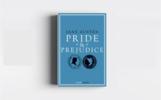"White Teeth," is a literary tour de force that
explores the complexities of identity, culture, and the
interwoven lives of diverse characters in postcolonial
London. Published in 2000, the novel has earned acclaim
for its vibrant narrative, rich characterizations, and
keen insights into the human condition. In this review,
we delve into the thematic depth, narrative brilliance,
and enduring relevance that position "White Teeth" as
one of the top books of all time.
"White Teeth" unfolds against the backdrop of
postcolonial London, capturing the cultural tapestry of
a city marked by waves of immigration and the remnants
of its colonial past. The narrative spans decades,
tracing the trajectories of two families, the Iqbals and
the Joneses, whose lives become entangled through a
series of chance encounters and interconnected
relationships.
The novel's historical scope
encompasses the latter half of the 20th century, from
the post-World War II era to the turn of the millennium.
This temporal breadth allows Smith to explore the
shifting dynamics of identity, cultural assimilation,
and the impact of historical legacies on the lives of
individuals and communities.
"White Teeth"
confronts the complexities of cultural diversity,
immigration, and the clash between tradition and
modernity. Smith's portrayal of London as a melting pot
of ethnicities and backgrounds provides a nuanced
examination of the challenges and opportunities that
arise when disparate cultures converge in a shared
space.
At the heart of "White Teeth" are the
two families whose destinies become intertwined, the Iqbals, a Bangladeshi Muslim family, and the Joneses, a
mixed-race couple comprised of Archie Jones and Clara
Bowden. Smith populates her novel with a cast of vivid
and multifaceted characters, each navigating the
complexities of their individual identities within the
broader context of multicultural London.
The
Iqbal family, led by the pragmatic and philosophically
inclined Archie Iqbal, embodies the immigrant experience
in London. As the family grapples with generational and
cultural shifts, the novel explores themes of
assimilation, tradition, and the evolving nature of
religious and cultural identity.
The Joneses,
comprised of the laid-back and somewhat directionless
Archie Jones and the enigmatic and mystical Clara, serve
as a lens through which Smith examines racial and
cultural hybridity. Clara's Jamaican heritage and her
connection to her ancestors add layers of complexity to
the exploration of identity, while Archie's affable
nature and search for purpose contribute to the novel's
overarching themes of self-discovery and reinvention.
Smith's ability to breathe life into her characters
allows readers to empathize with their struggles,
aspirations, and contradictions. The characters in
"White Teeth" are not mere archetypes but rather nuanced
individuals whose experiences reflect the rich tapestry
of human existence.
"White Teeth" delves into the
intricate layers of identity, exploring the concept of
roots and the hybrid nature of contemporary identities
shaped by migration and cultural cross-pollination. The
characters in the novel grapple with questions of
belonging, heritage, and the fluidity of identity in a
world characterized by constant change.
The theme
of roots is exemplified through characters like Samad
Iqbal, who grapples with the tension between his
Bangladeshi heritage and the desire to assimilate into
British society. Samad's internal conflict reflects the
broader challenges faced by immigrants seeking to
preserve their cultural roots while navigating the
complexities of a new cultural landscape.
Hybridity, on the other hand, is embodied by characters
like Clara Jones, whose mixed-race identity serves as a
metaphor for the blending of cultures and the emergence
of new, hybrid forms of identity. Clara's connection to
her Jamaican ancestry and her mystical experiences
highlight the novel's exploration of the fluid and
evolving nature of identity in a multicultural context.
Smith's treatment of identity is not limited to
fixed categories; rather, she invites readers to
consider identity as a dynamic and evolving construct
shaped by individual choices, historical legacies, and
the interplay of cultures.
"White Teeth" is infused with
Smith's signature wit and satirical lens, offering
incisive commentary on a range of social issues. The
novel takes aim at institutionalized racism, cultural
stereotypes, and the absurdities of contemporary life.
Smith's sharp observations are delivered with humor and
insight, providing readers with both entertainment and a
critical lens through which to view societal structures.
The character of Millat Iqbal, for example, serves
as a vehicle for Smith to satirize the rise of
fundamentalism and the allure of radical ideologies
among disenfranchised youth. Millat's transformation
from a rebellious young man to the leader of the radical
KEVIN movement becomes a commentary on the search for
identity and purpose in the face of social alienation.
Through humor and satire, Smith navigates complex
and sensitive issues, challenging readers to confront
uncomfortable truths while maintaining an engaging and
entertaining narrative. The novel's social commentary
adds layers of depth to its exploration of identity and
cultural dynamics.
"White Teeth" captures the
generational dynamics within families and communities,
exploring the clash and cohesion between different age
groups. The novel spans multiple generations, from
Archie Jones and Samad Iqbal to their respective
children and beyond. The interplay between generations
becomes a central theme, highlighting the ways in which
each successive generation grapples with the legacies of
the past while forging their own paths forward.
The tensions between parents and children, particularly
the struggles faced by the second-generation immigrants,
provide a lens through which Smith examines the evolving
nature of cultural identity. The novel portrays the
complex negotiation between traditional values and
contemporary realities, illustrating how generational
dynamics contribute to the ongoing dialogue surrounding
identity, heritage, and cultural continuity.
Smith's portrayal of generational shifts adds a layer of
authenticity to the narrative, capturing the nuances of
familial relationships and the ways in which individuals
navigate the expectations and aspirations of preceding
generations.
"White Teeth" is characterized by
a nonlinear and interconnected narrative structure, with
chapters that jump back and forth in time and
perspective. This nontraditional storytelling approach
reflects the complexity and interconnectivity of the
characters' lives, mirroring the way in which
individuals and communities are shaped by a multitude of
influences and experiences.
The nonlinearity of
the narrative allows Smith to build suspense and
anticipation, gradually revealing connections and
relationships that span decades. Readers are invited to
piece together the puzzle of the characters' lives,
creating a sense of engagement and discovery as the
narrative unfolds.
The interconnected structure
reinforces the novel's thematic focus on the web of
relationships, chance encounters, and shared histories
that bind the characters together. It also serves as a
narrative device that mirrors the dynamic and evolving
nature of cultural identity.
"White Teeth" stands as a literary triumph that transcends traditional boundaries of storytelling and explores the complexities of identity, culture, and the human experience. Zadie Smith's debut novel captivates readers with its vibrant characters, incisive social commentary, and exploration of the multicultural world.






